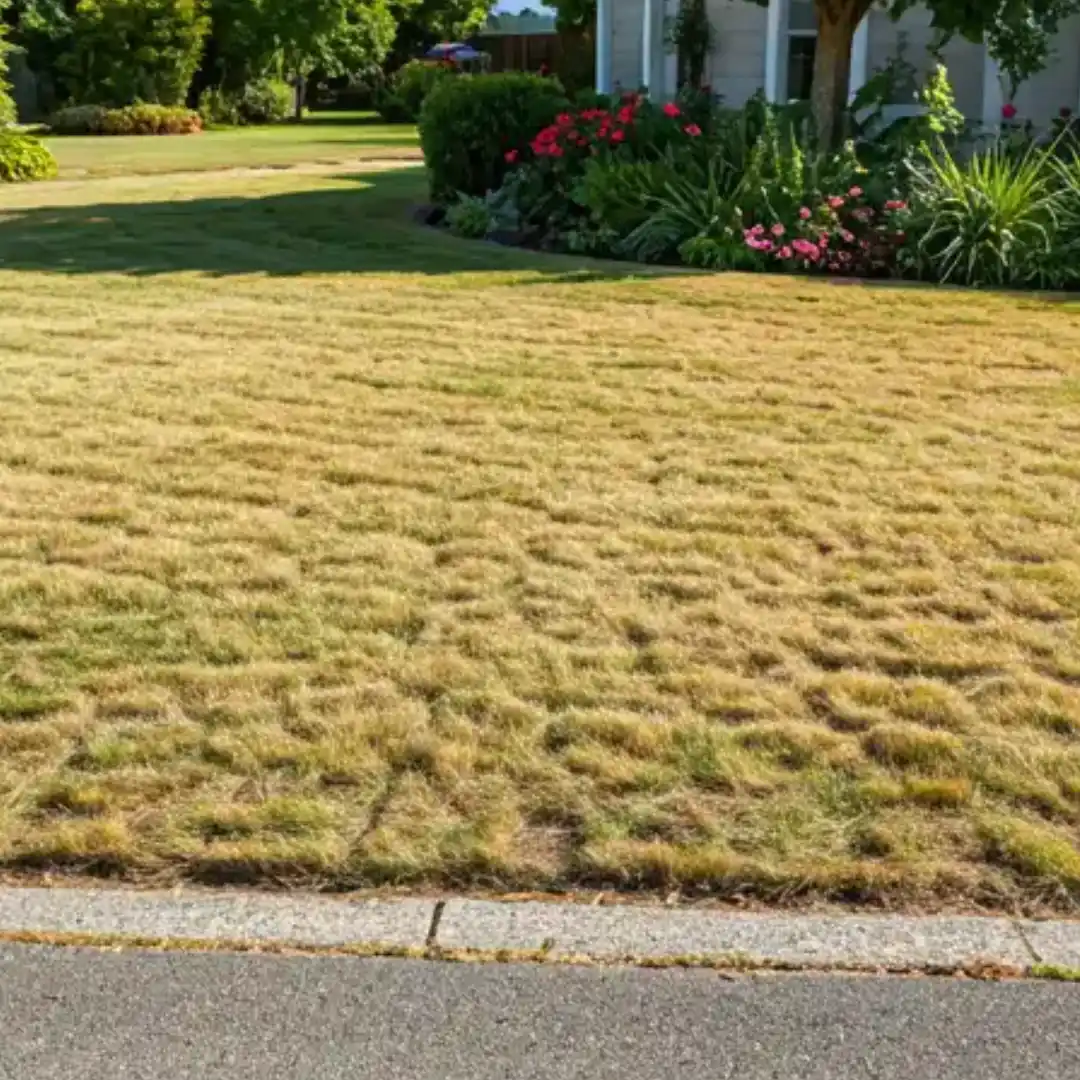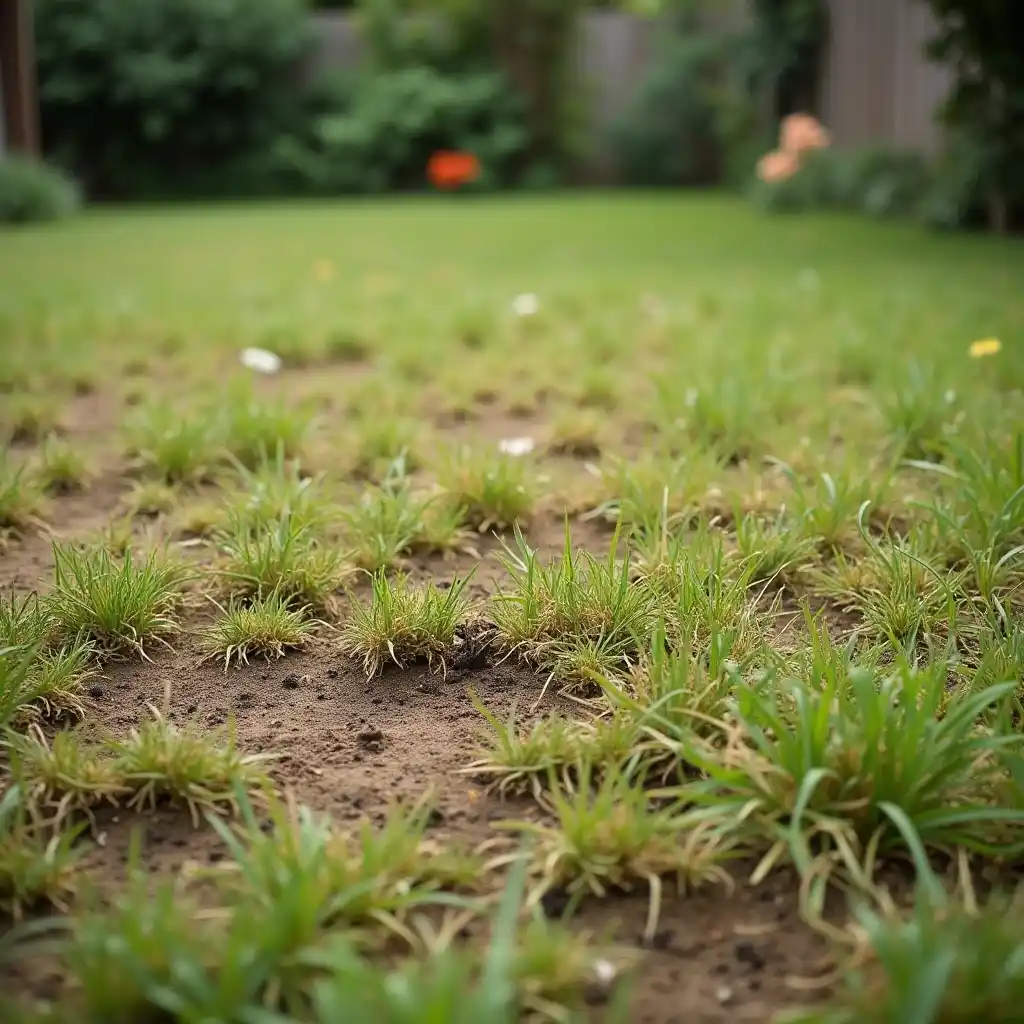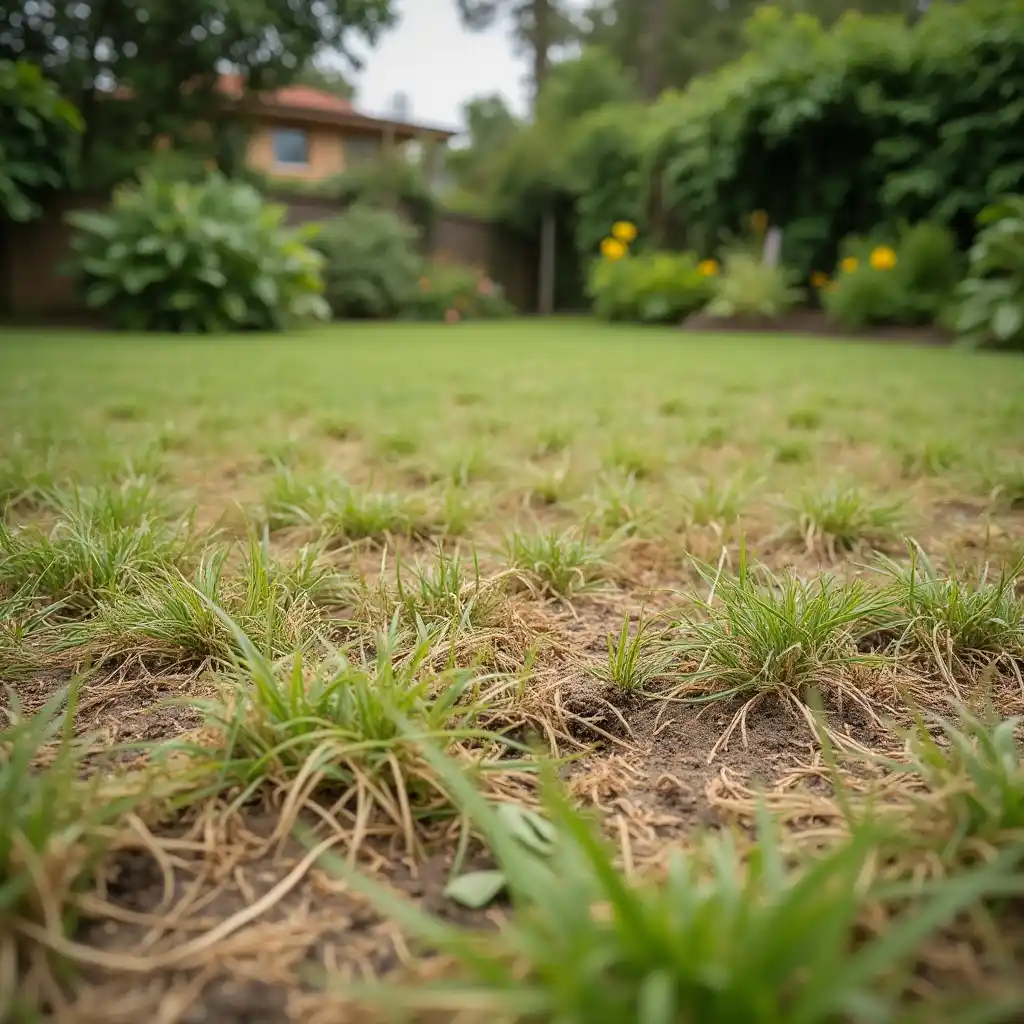Introduction
A vibrant green lawn is often the pride of any homeowner, but accidental misuse of weed killers can turn your lush turf into a patchy, lifeless yard. If you’ve found yourself dealing with a killed lawn after using a weed killer, don’t despair. This guide will walk you through the reasons why this happens, practical recovery steps, and ways to prevent future mishaps.
What Causes a Killed Lawn with Weed Killer?

Weed killers are effective at getting rid of invasive plants, but if used incorrectly, they can do more harm than good. Small mistakes can result in a damaged or even destroyed lawn. Let’s explore the common missteps that homeowners make and how they can lead to lawn problems.
Choosing the Right Product: Why the Wrong Weed Killer Can Killed Lawn
One of the most common issues is selecting the wrong type of weed killer. Non-selective weed killers, like glyphosate, can harm every plant they touch, not just the weeds you want to target. Many people unknowingly use these strong chemicals for spot treatments. For instance, you might apply glyphosate to kill crabgrass, but the chemical can drift in the wind and harm your grass. This can lead to serious damage, even to your healthiest plants.
Timing is Everything: How Environmental Conditions Affect Weed Killer
Timing plays a huge role in how effective weed killers are. Environmental factors like heat, rain, or wind can change how well the product works and how it affects your lawn. For example, if you apply weed killer on a hot day, the chemicals may evaporate too quickly or spread too far. Similarly, if it rains soon after you apply the product, it can wash the chemicals into areas you didn’t intend to treat. This often results in damage to flower beds or nearby lawns.
Application Mistakes: Why Proper Spraying Techniques Matter
Lastly, improper application can cause significant harm to your lawn. If you don’t target specific areas and spray the entire lawn, you might end up damaging healthy grass. Using a broad sprayer without adjusting the nozzle for a more precise application can lead to overspray, which can hurt grass in the surrounding areas. This often happens when homeowners try to cover too much ground quickly, leading to unintended damage.
Why These Mistakes Happen “Killed Lawn with Weed Killer”.
Many of these errors stem from misinformation or a lack of experience with lawn care products. Often, homeowners underestimate the strength of commercial weed killers or skip reading the product labels entirely. Others may be eager to eliminate weeds quickly and end up applying too much product, believing more is better. Moreover, environmental conditions like unexpected weather changes or poorly calibrated sprayers can amplify these mistakes.
Real-Life Example: A Lesson in Timing and Moderation
Imagine a homeowner named Chris, who noticed a few weeds sprouting in his backyard. Eager to act, he purchased a non-selective weed killer and sprayed the entire area on a windy afternoon. Within a week, not only were the weeds gone, but so was most of his grass. The wind had carried the spray to unintended parts of the yard, and the overapplication saturated the soil, killing off the once-thriving lawn. Chris learned the hard way that timing, careful application, and the right product choice are essential to protecting his lawn.
By understanding these common mistakes and the factors that contribute to them, you can avoid falling into the same traps. Always take the time to research products, follow manufacturer guidelines, and apply weed killers with precision and care.
Understanding Different Types of Weed Killers
Knowing the types of weed killers can help you make better choices:
- Selective weed killers: These target specific weeds without harming the grass.
- Non-selective weed killers: These kill all vegetation and should only be used in areas without grass or where replanting is planned.
- Homemade and natural alternatives: While safer for the environment, these can still damage your lawn if improperly applied.
Why Some Lawns Are More Vulnerable
Certain lawns are more prone to damage:
- Sensitive grass varieties: Cool-season grasses, like fescue, can be more affected by chemical exposure.
- Soil health: Poor soil quality or compacted soil can worsen the impact of weed killers.
How to Repair a Killed Lawn with Weed Killer

Step-by-Step Guide to Lawn Recovery
Recovering from a killed lawn with weed killer requires careful planning and effort:
- Assess the damage: Look for dead grass, brown patches, and wilting. Also, check if the soil smells chemically saturated.
- Gather your tools: Make sure you have a sprayer, lawn seed, soil conditioner, and gardening gloves.
- Take safety precautions: Wear gloves and avoid contact with chemical residues.
Preparing the Soil for Lawn Repair
Healthy soil is the foundation of lawn recovery:
- Remove dead grass: Rake the area to clear away debris. You may also need to use a dethatcher if the damage is widespread.
- Aerate the soil: Improve oxygen flow using a manual or mechanical aerator.
- Add organic matter: Enrich the soil with compost or natural fertilizers.
Real-life Example: Lisa from California accidentally sprayed non-selective weed killer on her lawn. After removing the dead grass and mixing compost into the soil, she successfully reseeded her yard within a few months.
Reseeding or Turf Replacement?
Deciding between reseeding or turf replacement depends on the extent of the damage:
- Reseeding: Ideal for small patches. Use high-quality lawn seed suited to your region.
- Turf replacement: Best for larger areas with extensive damage. Lay pre-grown turf for quicker results.
Reviving Dead Grass Naturally
Natural methods can encourage grass recovery:
- Watering routine: Deeply water the lawn twice a week to encourage root growth.
- Homemade remedies: Try using diluted vinegar or baking soda for weed control in the future to avoid over-reliance on chemicals.
Importance of Soil Testing
Before reseeding, conduct a soil test:
- Check for pH balance and nutrient levels.
- Use amendments like lime for acidic soil or sulfur for alkaline soil to create the perfect growing environment.
Preventing Future Damage to Your Lawn: “Killed Lawn with Weed Killer”
How to Avoid Killing Your Lawn with Weed Killer
Prevention is always better than repair. Here’s how to ensure your lawn remains healthy and protected:
- Apply Carefully: Use a sprayer with a narrow nozzle to target specific weeds rather than broadcasting chemicals over the entire lawn. Additionally, avoid spraying weed killer on windy days to prevent drift onto healthy grass or nearby plants. Apply weed killer in the early morning or late evening when temperatures are cooler to minimize evaporation and reduce the risk of chemical burns.
- Read the Label: Always take time to read and understand the application instructions, dilution requirements, and safety precautions provided by the manufacturer. Ensure you’re using the correct type of weed killer for your specific needs. For example, selective herbicides are ideal for targeting weeds while preserving your lawn.
- Spot Test First: Before applying a new weed killer across your lawn, test it on a small, inconspicuous patch to monitor its effects. This step helps you avoid widespread damage in case the product reacts negatively with your grass type.
Using Dog-Friendly and Eco-Friendly Lawn Products
Pets and environmental concerns don’t have to complicate lawn care. Try these solutions:
- Dog-Friendly Products: Opt for products labeled as safe for pets. These are less toxic and reduce health risks to animals that frequently play or rest on the lawn. Also, keep pets off treated areas until the product has dried completely or as directed on the label.
- Mulch and Cardboard: For a chemical-free approach, use mulch or layers of cardboard to suppress weeds. These materials prevent sunlight from reaching weed seeds, reducing their growth naturally.
Seasonal Lawn Care Tips
Adapting your lawn care routine to seasonal changes ensures year-round health:
- Winter: Apply a winter fertilizer to protect grass roots during the colder months. This strengthens the lawn and prepares it for a vigorous spring growth period.
- Spring and Summer: Focus on keeping common weeds like clover and dandelions under control. Use eco-friendly methods such as hand-pulling weeds or applying organic pre-emergent herbicides.
How to Control Weeds Without Chemicals
Eco-friendly alternatives can effectively control weeds while minimizing environmental impact:
- Boiling Water: Pour boiling water directly onto weeds growing in driveways, patios, or garden beds. This method is highly effective for killing weeds without affecting nearby grass.
- Salt and Vinegar Mixture: Combine salt and vinegar to create a natural weed killer. Spray this solution on weeds, but exercise caution to avoid spraying it on grass or plants you want to keep.
Pro Tip: For best results, apply natural weed killers on a sunny day when the heat can amplify their effectiveness.
Conclusion
Maintaining a lush, green lawn while managing weeds requires not only careful planning but also the use of the right products and mindful application techniques. However, accidental damage from weed killers can feel overwhelming. Nevertheless, with the proper recovery steps and preventive measures, your lawn can bounce back to its healthy, vibrant state. Furthermore, by taking the time to understand the different types of weed killers, their correct application methods, and eco-friendly alternatives, you can effectively ensure a beautiful lawn while also minimizing harm to your plants, pets, and the environment. In conclusion, remember that with a little research, combined with consistent care, you can go a long way in creating and preserving your dream lawn.
FAQ About “Killed Lawn with Weed Killer”.
Q1: What is the main reason weed killers damage lawns?
R1: Weed killers damage lawns primarily due to incorrect usage, such as choosing the wrong product, poor timing, or improper application techniques.
Q2: How can I prevent weed killer from harming my grass?
R2: Use selective weed killers designed for your grass type, follow the manufacturer’s instructions, and avoid applying chemicals on windy or rainy days.
Q3: Can a lawn recover after being damaged by weed killer?
R3: Yes, a lawn can recover with proper care, including soil aeration, reseeding, or turf replacement, and by following a consistent watering and fertilizing routine.
Q4: How do I choose the right weed killer for my lawn?
R4: Select a selective herbicide for weeds in grassy areas and a non-selective one for areas without grass. Always read the product label to ensure it’s appropriate for your grass type.
Q5: What are some eco-friendly weed control options?
R5: Eco-friendly options include using boiling water, a salt-and-vinegar mixture, or natural mulch to suppress weeds. These methods reduce chemical exposure and environmental impact.
Q6: How soon can I replant grass after using a non-selective weed killer?
R6: Wait at least 7–14 days after applying a non-selective weed killer, or follow the product’s instructions to ensure the chemicals have dissipated.
Q7: What are the signs that my lawn has been damaged by weed killer?
R7: Signs include brown or dead patches, wilting grass, or areas that fail to grow even with proper care.
Q8: Are homemade weed killers safer for pets and children?
R8: While homemade solutions like vinegar or salt are generally safer than chemical alternatives, it is important to note that they can still harm grass and plants if overused. Therefore, it is crucial to apply them carefully and with precision. Moreover, understanding the potential risks and benefits of these solutions can help you make more informed decisions about their use. By taking these precautions, you can effectively manage weeds while minimizing unintended damage to your lawn and garden.
Q9: How can I test a new weed killer safely?
R9: Spot-test a small, inconspicuous area of your lawn before widespread application to ensure it won’t harm your grass or plants.
Q10: What seasonal tips can help keep my lawn healthy year-round?
R10: In winter, use a protective fertilizer to strengthen roots. During spring and summer, focus on organic weed control and regular watering to maintain a healthy lawn.

